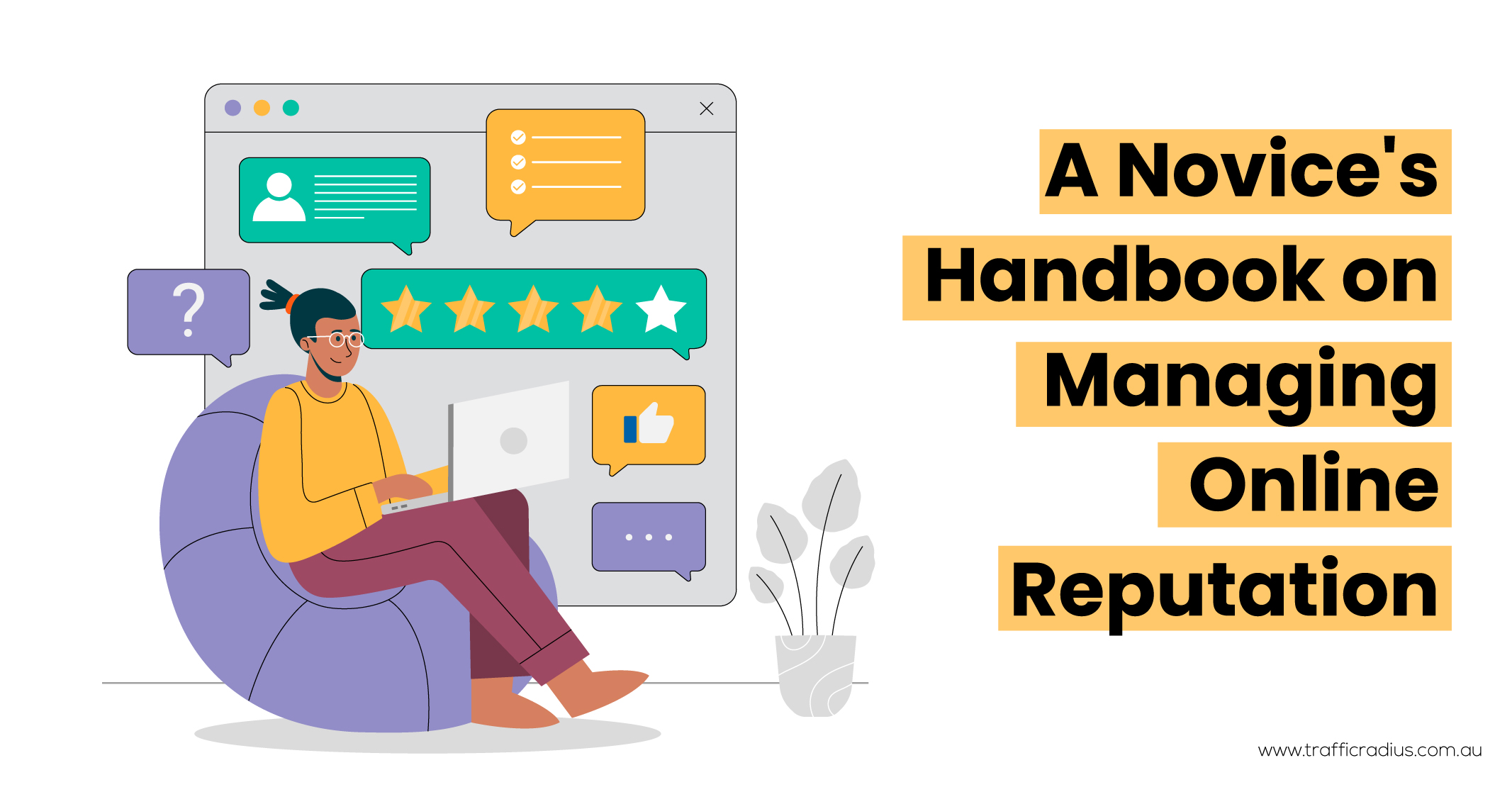I hope you enjoy reading this blog post.
If you want to get more traffic, Contact Us

Click Here - Free 30-Minute Strategy Session
Be quick! FREE spots are almost gone for this Month. Free Quote

Exploring the realm of online reputation management (ORM), which involves the ongoing maintenance and control of how a brand, business, or individual is perceived by the public on the internet.
ORM encompasses various practices such as addressing negative feedback, acquiring positive reviews and keeping track of brand mentions.

Click Here – Free 30-Minute Strategy Session
Be quick! FREE spots are almost gone for this Month
Within this blog, we will delve into the following areas:
Online reputation management involves enhancing the perception of your brand among customers. It enables you to foster customer trust, establish authority in your industry and potentially boost sales.
Although online reputation management shares similarities with public relations (PR), they serve different purposes.
PR utilises relationships to cultivate a positive image for a brand both online and offline. On the other hand, online reputation management focuses on monitoring and managing your brand’s reputation and interactions within the online sphere.
To summarise, public relations and online reputation management strategy employed to shape public perception of your brand.
There are four primary channels involved in online reputation management:

Paid media refers to various online content that requires payment for featuring your brand. This encompasses platforms such as Google Ads, social media ads, sponsored posts, and influencer promotions.
What To Do?
Hire reputation management consultants who have the knowledge and understanding of using paid media so that you can gain complete control over the messaging.
Earned media entails the coverage and exposure your brand garners from third-party platforms without any monetary transaction.
Examples of earned media include:
While earned media can be achieved organically through customer reviews management and online listings, proactive outreach to publications and influencers may be necessary to obtain social media and press coverage, among others.
Earned media has the potential to cast a favourable light on your brand and foster trust among online visitors.

Shared media refers to any content related to your brand that is shared on social media platforms. This includes content shared both by your brand’s official accounts and by other users.
What To Do?
Owned media refers to media platforms that you have full control over, such as your website or blog.
You can influence the reach and impact of owned media channels by enhancing your rankings on search engines like Google. Here are a few strategies:
Effectively manage your presence in local search results to attract local customers.
By adhering to SEO best practices, you increase your chances of securing higher rankings on Google. Consequently, users searching for keywords related to your brand will be more likely to encounter valuable content from your brand.

Safeguarding a positive reputation holds immense significance as it directly impacts sales performance.
Nearly 60% of consumers in the United States stated that they would refrain from purchasing from a brand that appears untrustworthy.
An unfavourable online reputation can severely undermine the trustworthiness of your brand and, consequently, hinder your business’s success.
Here are several other compelling reasons why reputation management is crucial for your business:
Now, let’s explore real-life examples of online reputation management in action to better understand its profound impact on actual businesses.
One of the reputation management examples is United Airlines:
In 2017, United Airlines suffered a substantial blow to its reputation, resulting in a market value loss of over $1 billion. The catalyst was a viral video capturing a passenger being forcibly removed from an overbooked flight.
Within a single day, the video generated more than 1 million online mentions and accumulated over 100 million views. Criticisms were directed at the CEO for perceived inaction during this public perception crisis. Even today, this incident remains a prominent topic in discussions on online reputation management (ORM).
Another well-known reputation management example is Nestlé:
Nestlé encountered its online reputation management failure when Greenpeace accused the company of engaging in environmentally harmful practices. Instead of directly addressing the issue, Nestlé exacerbated the situation by requesting YouTube to remove Greenpeace’s video.
Therefore, the company faced negative backlash, leading to the temporary shutdown of its public page due to a barrage of critical comments, including an altered version of the KitKat logo with the word “Killer.” This incident serves as a reminder that a single negative story can swiftly transform reputation management into an online nightmare. Hence, proactive management of brand image and preparedness for crises are essential.
Pro tip: When dealing with negative reviews, it is advisable to respond publicly whenever feasible. While deleting negative comments may not be an option, showcasing how you handle such situations can demonstrate to other customers your commitment to addressing concerns.

1. Before implementing any online reputation management (ORM) processes, it is crucial to conduct a comprehensive audit of your online reputation. This step aims to understand how your customers perceive and discuss your brand online, providing insights into areas of strength and potential challenges that need to be addressed.
What To Do?
To begin, review your website, social media profiles, blog, and any third-party business profiles. One effective method is to examine the Google search results:
The app generates a report containing recent mentions and a chart indicating the percentage of positive, negative, and neutral mentions.
2. Establish an online reputation management strategy. Now that you have insights into your brand’s current online reputation, it is time to develop an ORM strategy. Begin by determining your priorities and what aspects you want to focus on.
What To Do?
3. To effectively manage comments, reviews, and mentions across various channels, it is important to set ground rules and guidelines. Develop policy documentation and define a consistent tone of voice to ensure cohesive messaging to customers.
What To Do?
4. Include communication guidelines in your policy documentation to prioritise day-to-day tasks and determine which issues require immediate attention. Based on your audience size and engagement levels, you may receive numerous mentions and reviews simultaneously. Therefore, it is important to distinguish between urgent and non-urgent matters.
What To Do?
4. Staying informed about what people are saying about your brand is essential. Delayed responses to negative comments can exacerbate the problem. To effectively monitor brand mentions, consider the following:
What To Do?
5. Crises can arise unexpectedly, but you can prepare for them by implementing a crisis management strategy. Consider the following steps:
What To Do?
Tips for Reviews Strategies: Encouraging customers to leave genuine reviews on platforms like Google, Yelp, and Trustpilot is an effective way to manage your online presence and enhance your reputation. Positive reviews not only have the potential to influence prospective customers but also occupy space on search engine results, providing a positive impression when people search for your brand.
Learn More: Optimising Customer Reviews and Testimonials: Best Practices

While not all customers will leave reviews, there are several strategies you can employ to make the review process more convenient, increasing the likelihood of receiving reviews:
Tips for Managing Negative Online Reviews:
Negative online reviews can significantly impact customer perceptions, with 94% of customers admitting that such reviews can deter them from choosing a particular business. To effectively manage negative reviews, follow these steps:
Remember that an effective reputation management strategy involves proactively engaging with customers and promptly addressing their concerns to maintain a positive brand image.
Learn More: Blog Comments SEO
Maintaining brand consistency in your messaging and tone of voice is crucial for effective branding. Consider the following points:
What To Do?
To summarise, online reputation management is a vital element in establishing and preserving a positive brand image in the digital realm. It requires actively monitoring and addressing how your brand is perceived by customers and the public online. By effectively managing your online reputation, you can enhance customer trust, bolster brand credibility, and positively influence purchasing decisions.
Here are the Key Points to Remember:
Conduct an online reputation audit: Before implementing an ORM strategy, conducting an audit helps you gain insight into how your brand is perceived online and identify areas for improvement.
Develop an ORM strategy: Creating a comprehensive strategy involves prioritising ORM tactics, establishing clear documentation and guidelines, and preparing for potential crises.
Monitor brand mentions: Regularly monitoring brand mentions across various platforms and using media monitoring tools provides valuable insights into customer perception, enabling proactive reputation management.
Handle negative reviews: Swift and courteous responses to negative reviews showcase your dedication to customer satisfaction. Address concerns, admit mistakes if applicable, and offer solutions or apologies to mitigate the impact of negative feedback.
Create on-brand content: Consistency in messaging and tone of voice across channels reinforces your brand identity and aids in customer recall. By implementing SEO best practices and monitoring search results, you can dominate the search engine results page (SERP) for brand mentions.

LEAVE A REPLY